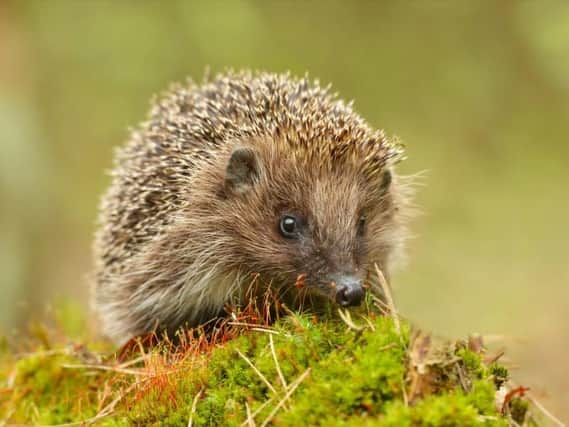How you can protect hedgehogs in your garden this Bonfire Night


Autumn is a particularly difficult time of year for hedgehogs. Hundreds of 'autumn juveniles' face potential starvation during the winter months, as many hoglets born in the late summer struggle to fatten up enough to survive hiberation.
Meanwhile, with Bonfire Night fast approaching, some hogs may seek shelter inside bonfires - which are then set alight, with tragic results.
Advertisement
Hide AdAdvertisement
Hide AdViv Critchley, of Blackpool Hedgehog Rescue on St Annes Road, said: "This time of year, hedgehogs are often hidden under leaves and a lot of them end up being found by dogs or scooped up by accident, and if those leaves are burned the hedgehog burns with it. Bonfires shouldn't be built until the day they're going to be burned, because a hedgehog is likely to crawl in because it's a nice, warm, cosy den."
Hedgehog numbers have dropped by 50 per cent in rural areas since the year 2000 - and bonfires aren't the only threat to their existence.
Mel Greenhalgh, who runs Brambles Wildlife Rescue in South Shore, said: "At the moment, the lack of food is a particular problem. As winter approaches there is less food for wildlife, and so hedgehogs are mostly eating slugs and snails which are more likely to carry parasites. All of the hedgehogs we've had in the past three months have had roundworm. I think it's harder this year than any other year we've had.
"Late-born juveniles that haven't reached a healthy weight for hiberation are at risk of starving to death. We're not in hibernation season just yet so there's a little more time, but if a hedgehog hasn't reached a healthy weight in four weeks' time, that's it. It will have to be kept in a rescue over the winter and released in the spring."
Advertisement
Hide AdAdvertisement
Hide AdViv added: "Looking after hedgehogs this time of year is really a labour of love, with constant feeding. The rescue has a few autumn juveniles, and they need feeding every two hours. The really small ones that come in are no bigger than a golf ball, but the juveniles are usually about the size of a tennis ball. They all need a helping hand, because a lot of them will be underweight by hibernation.
"If they are still underweight by winter, they will be kept in."
Anyone who sees a hedgehog wandering around in daylight hours is encouraged to get in touch with a wildlife rescue, as these creatures are noctural, and venturing into sunlight is a sign that something is seriously wrong, rescuers say.
Mel said: "Any hedgehog that's out in the day needs to be taken to a rescue, at the very least, to be checked over. I have never had a hedgehog brought in that I thought was perfectly healthy.
Advertisement
Hide AdAdvertisement
Hide Ad"Hedgehogs are nocturnal animals, so really you should never see them. If they're out in the daylight, they're in trouble."
TIPS FOR PROTECTING HEDGEHOGS ON BONFIRE NIGHT
1. Check the area for hedgehogs before starting fireworks or lighting a bonfire
2. Build the fire clear of all buildings, sheds, fences and hedges where hedgehogs make their homes
3. If you find a hedgehog in your bonfire or nearby, put it gently in a cardboard box and take it well away from any fires. Release it back into the garden after the fire is out and dampened.
Advertisement
Hide AdAdvertisement
Hide Ad4. Don't use flammable liquids, and avoid burning things like aerosol cans, paint tins, foam furniture or batteries
5. Never put any fireworks - even spent or non-functioning ones - on a fire
HOW CAN YOU HELP HEDGEHOGS IN YOUR GARDEN?
1. Create a 'hedgehog highway' by making a hole in your fence, allowing hedgehogs freedom to roam
2. Plant natural wildlife and hedges where they can nest and forage, or buy a 'hedgehog house' where they can shelter
Advertisement
Hide AdAdvertisement
Hide Ad3. Place a ramp or stones around the edges of your pond if you have one, so hedgehogs don't drown if they fall in
4. Put down meat-based dog or cat food - not bread and milk, which can dehydrate a hedgehog. Avoid slug pellets and other poisons which can prove lethal.
5. Check carefully before strimming or lighting fires
Comment Guidelines
National World encourages reader discussion on our stories. User feedback, insights and back-and-forth exchanges add a rich layer of context to reporting. Please review our Community Guidelines before commenting.